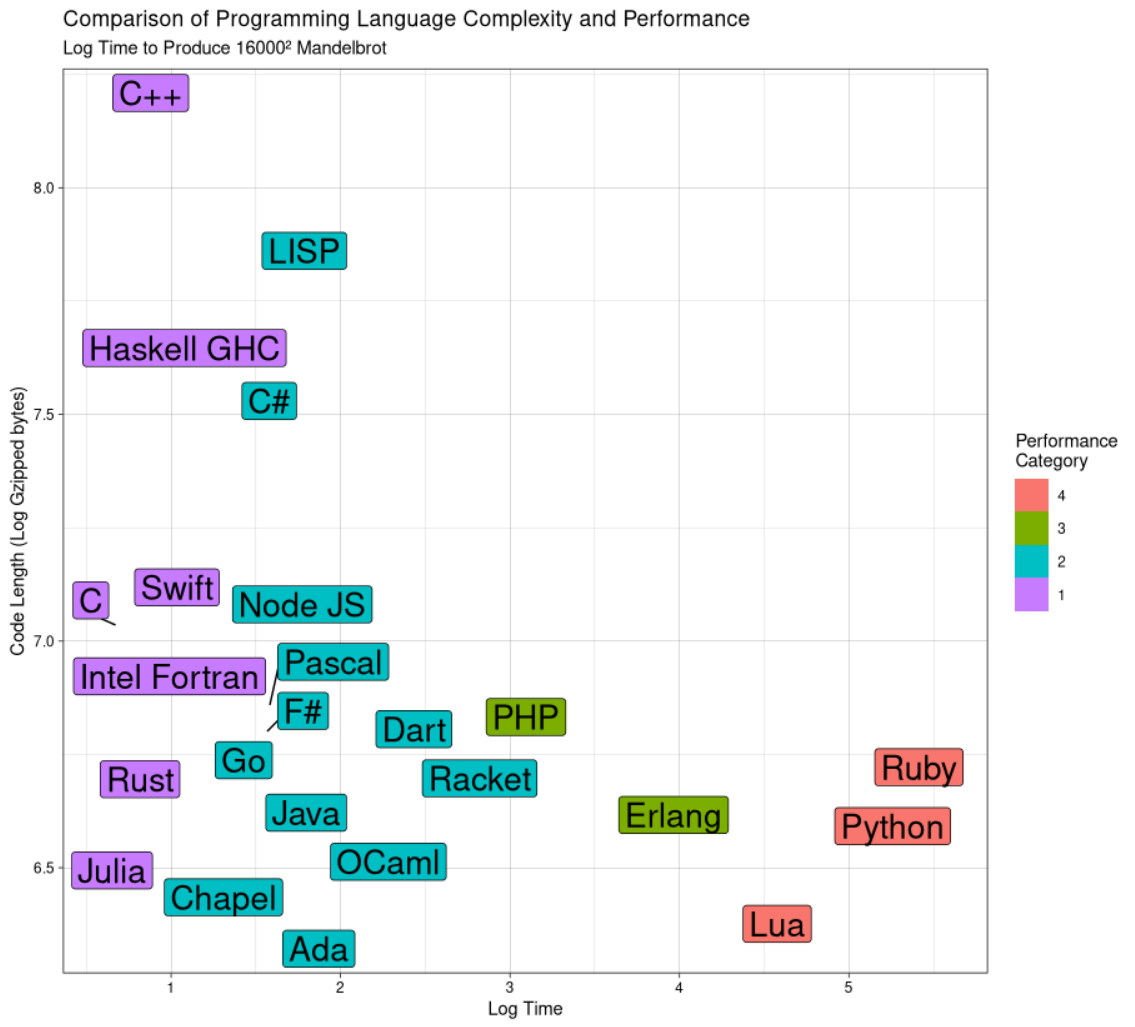Why Julia?
Paraphrasing Why Julia?, Julia is a fast and expressive programming language, delivering the speed of C++ and Fortran together with the productivity of Python, MATLAB, and R. This fundamentally empowers diverse teams to work together to develop and deploy performant programs at scale by solving the two language problem.
Benefits of Julia
Julia combines the speed of low-level languages like C++ and Fortran with the productivity of high-level languages like Python, MATLAB, and R. Here are some of its key benefits:
- High Performance: Optimized for native compilation, multi-threading, and GPU compute, Julia can achieve speeds close to C++.
- High Productivity: Expressive and dynamic, Julia is up to 100x faster than traditional high-level languages.
- Ease of Use: Clear and simple syntax, making it easy to learn, write, and analyze.
- Composability: Packages are designed to work seamlessly together and with custom code.
- Interoperability: Julia integrates well with languages like Python, R, C++, and Java.
- Unified Language: Supports both prototyping and deployment, solving the two-language problem.
- Rich Ecosystem: More than 10,000 registered packages and a large community of contributors.
The Two-Language Problem
Traditionally, programming required both a high-level, slower language for prototyping and a low-level, faster language for production, causing inefficiencies. Julia unifies these two needs into one language, allowing:
| Aspect | High-Level Language (e.g., Python) | Low-Level Language (e.g., C++) |
|---|---|---|
| Pros | Easy to write and read | Fast in production |
| Cons | Slow in production | Complex, lengthy code |
| Julia’s Solution | Combines ease of high-level with speed of low-level, eliminating the need for separate languages for research and production. |
Comparisons
If you want to know for instance the date of the first public release, the price and the names of the creators of numerical-analysis softwares, please visite the Wikipedia page.
Julia is made for scientific computing as shown by the table below which compares some languages in terms of differential equation solvers. For more details visit this page.
You can find here cheatsheets. One interesting is the comparison with Python and R.
One goal of Julia is to be efficient and high-level. This is illustrated by the following figure given by the Mandelbrot benchmark project.


